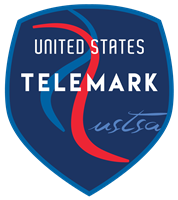The local athlete and three-season high school coach was on a tear in the world of tele racing last season. But then he experienced a tear of a different kind — two, to be exact, one in each knee.
Gogolen, who was officially named to the U.S. Telemark Team in July, first tore his MCL (left knee) while crossing the finish line at the national championships in 2010. This year, just after being named to the team, Gogolen tore his ACL (right knee) playing soccer.
It was an arduous, six-month rehab process, but Tommy G is back on snow, scoring a second place finish last weekend in his first race back at Sunlight Mountain, outside Glennwood Springs. The strong finish comes despite the fact that he had to forgo the jump portion of the race, which docked him a 3-second penalty.
“I talked to my therapist over at Howard Head, and he said I am good to go,” Gogolen said. “It’s definitely not 100 percent, but we’re good to go at 70 percent. For now, I’m going to skip the jump and avoid the impact on the knee and take the penalty.”
Tele racing consists of a GS course, complemented by a jump somewhere in the middle. Whereas getting air is generally minimized in alpine racing, tele’ers are encouraged to go big. If a racer can’t clear a line roughly 25 yards down the hill and land in a proper tele’ turn — and half the racers don’t — there’s a penalty. And for two of the telemark disciplines, there are also skate portions following the downhill section.
“The field was not the best field (at last weekend’s race). A couple of our Americans were overseas, competing in the World Cups, but there were five or six national team members there, so it was still competitive,” Gogolen said. “It was the hardest I’ve skied since I’ve been on snow, and it felt great.”
The primary concern was to test the knee, and the knee passed the test.
Gogolen said the prospect of practicing a few jumps is definitely on the horizon. “Jumping is probably my strong suit of the race,” he said. “So I’m not too worried about it — it’s just the impact of landing. I’m definitely going to build up to it.”
Also the boys’ and girls’ high school soccer coach and alpine ski team coach (and previously the golf coach), Gogolen, who moved to Breck seven years ago, says staying involved with kids is a great way to remain active and fit for competition.
“I’ve been coaching for about five years. I love it; it’s definitely fun to get out there with the kids,” Gogolen said. “Anytime we have GS training, I definitely jump in gates with the kids. I’m on my telemark skis, and it’s a little different. But it’s a great way to train.”
Originally an alpiner, Gogolen gradually immersed himself into the sport of tele racing. He didn’t advertise his accomplishments or ambitions with the community until he was sure he wanted to go all out. That moment came during a car ride home from nationals, when he was informed he had taken seventh, despite the tear to his knee.
The transition from alpine has been a process for Gogolen, who initially sustained too many penalties for not making a complete tele turn at every gate. His wide alpine stance didn’t lend itself visually to the required fore-aft gap between boots, which signals a completed telemark turn. But he has since narrowed up the stance and is feeling much more confident with his form.
“As far as balance goes, it’s a real big difference between alpine and telemark. In alpine skiing, I was pretty aggressive. You can still be aggressive in telemark, but you’re going to pay for it a lot quicker,” Gogolen said.
The next race for Gogolen is a World Cup in Steamboat Springs the second week of February.
“It’ll be a good confidence booster,” Gogolen said. “Even if I’m at 70 percent, it will boost my confidence enough to prepare for the World Cup. The second week of February will also mark six months, to the day, of my surgery.”
The telemark team is looking forward to the first-ever night event called the Parallel Spring Classic, which was he conceived with the hope of appealing to the IOC for inclusion into the Olympics. It will be a dual event with elimination rounds.
“With the injury, the goal was originally to just get back out and start racing again,” Gogolen said. “But I think my knee feels better than I anticipated, so the new goal is top 20 in a World Cup.”

 Sunday, January 29, 2012
Sunday, January 29, 2012